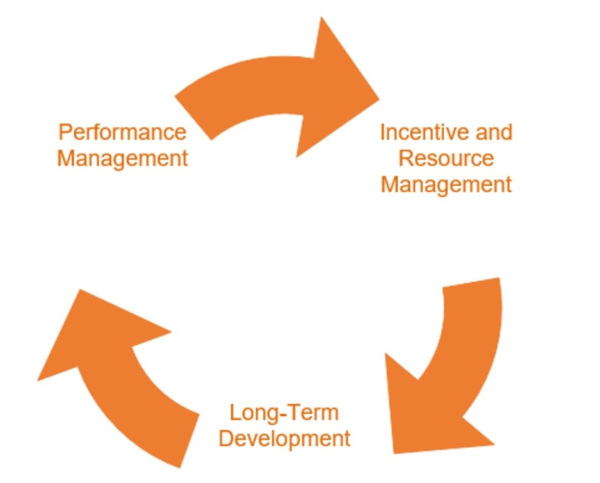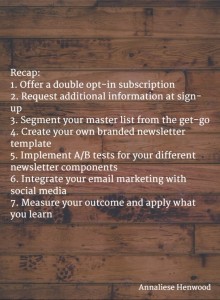— April 14, 2018

In 2017, Aberdeen found that 64% of Best-in-Class companies (the top 20% of performers as defined by Aberdeen’s Best-in-Class research methodology) distrusted traditional performance reviews. This sets the tone for a major challenge facing organizations today: Traditional performance reviews are hindering employee growth, productivity, and participation in organizational goals and objectives.
The real problem is that performance reviews are just too retroactive and subjective. Managers conduct them at pre-determined intervals, so problems are uncovered only after they’ve negatively impacted the company. For more than 80% of companies, performance data gets siloed in the employee record without contributing to a strategy for accommodating employee growth objectives. Furthermore, Aberdeen has found that more than 70% of the time, lead managers grade on a scale. Subjective grading means that employees max out at a score of three out of five, so managers avoid the justification for pay raises or titular advances, while avoiding needlessly picking at employee shortcomings. Subjectivity further denigrates employees by imbuing a negative bias between management and portions of the workforce that some managers simply do not like or respect.
The shorthand of performance reviews is that they go a long way toward maintaining a status quo, without improving the workforce or, by extension, the company.
While we see many organizations understanding the downside of traditional performance management processes, there remains either a reluctance to change or, perhaps more likely, some confusion about how to truly engage and grow their people. Counterintuitively, much of this is due to limitations set by their existing HCM/HRIS technology platforms, as many, if not most, were not built to accommodate a more modern, agile approach to performance management. Despite good intentions, many companies therefore end up making a token nod to ongoing coaching and development. This in turn eventually “fizzles out” due to lack of adoption (for multiple reasons), or remains disconnected from the performance management cycle altogether, which further adds to employee frustration and disillusionment.
What Damaged Performance Management Structures Mean for Long-Term Employment
Adding to this, heading into 2018, Aberdeen has found that the average employee lifecycle is continuing to shorten to a one- to two-year engagement. As companies grapple with this, and as sentiment around traditional performance management sours, managers are coming around to the fact that just because an employee has the same job for one to two years does not mean that they will work for the same company for one to two years. In a 2017 survey, Aberdeen took note that while a competitive salary was not necessarily a top-three reason that employees join an organization, it is a reason they stay with the organization. In other words, while employees weigh a host of reasons for selecting their workplace, they are still looking for long-term compensation opportunities that show that the employer is invested in their growth, development, and success. To this end, the ability to chart and see a career track, along with solid job boundaries, were among the top three reasons that employees chose their employers. Employees want to see that they can grow within an organization, and they want to see that the employer is actively working towards helping them grow their careers.
On the employer side, there is a real financial incentive to invest in the workforce in this way. Let’s look at the math: As the Bureau of Labor Statistics reports, the average, comprehensive salary investment for a full-time, corporate employee is around $ 74,000, while part-time employees come in at about half that amount. In 2017, Aberdeen found that the average time to work at full capacity in a given role is four to six weeks, depending on the role. From there, employee performance for most companies in Aberdeen’s survey typically grows only after the first full year of employment. Discounting the additional costs of early training and employee onboarding, to run in the green on a new hire, employers must aim to keep them employed for at least two years.
With retention hanging under the two-year mark, Best-in-Class companies are revisiting the reasons employees disengage and leave the company. From a resource perspective, as desirable employees gain more choice around where they work, employers must be aware that they need to develop a labor investment strategy that responds to individual employee goals, while placing them on a development track that matches those goals to organizational interests. They must ensure that the one- to two-year itch to change jobs can be scratched while keeping the employee optimized within the organization.
Focusing on delivering a truly integrated, “always-on” approach to performance management can positively impact several talent metrics: Employee retention rates, coaching effectiveness (year-after-year coaching indices scores), competency proficiency (both individual and team year-after-year competency proficiency assessment scores), and employee engagement and satisfaction survey results.
Providing an efficient system that enables real-time, ongoing coaching and development can result in employees feeling that manager / company expectations are clearer, there is greater investment in their personal growth and development, and the approach to managing their performance is more objective and fair. Employees also feel that an “Uber-like” feedback solution (more in-the-moment communication) allows them to adjust or “stay the course” as needed, and to target needs-based, micro-development opportunities to be more effective. While this new approach can be a bit of an adjustment for managers, especially those not proficient in coaching, a majority report they feel more connected to their people and the business, and that their talent management responsibilities have become easier after only a few months of use.
Building an Inclusive, Real-Time, and Long-Term Performance Management Strategy
In the 21st century, there are several resources available to chart, map, and drive performance in real time, in a way that puts managers and employees on the same side of the table when aiming to resolve strategic, operational problems and chart employee growth opportunities. In Building Holistic Employee Development: The Performance Cycle (September 2017), Aberdeen looked at possible ways to make performance management more responsive to the needs of the organization. What the report revealed is that employers have a wealth of untapped data from rewards management, wellness, well-being, and learning and development. This untapped data can help drive employees along career paths that are relevant to both their own personal career goals and the goals of the organization.
Figure 1: The Performance Lifecycle

Figure 1 shows a simplified version of Aberdeen’s defined performance cycle concept. While all three branches of the cycle feed information to the others, the gist of the cycle is that companies can map participation rates in rewards management alongside consumption rates of wellness and well-being resources. This allows them to more fully understand what motivates and pressures employees. It is also helping them understand the internal and external stresses that impact work quality and employee participation in learning, development, and corporate objectives.
In 2017, Aberdeen found that Best-in-Class companies were three times more likely than All Others (64% vs. 21%) to pursue a data-integrative strategy that brings together these solution data sets, giving them a better understanding of how employees participate and drive results inside the organization. Through this method, the Best-in-Class were four times more likely than All Others (44% vs. 11%) to communicate management goals and objectives more strategically through employee-facing materials, leading to real-time, two-way communication between management and the workforce.
Employees, too, are looking for more objectivity in the performance management process, while keeping the more human elements intact. For instance, traditional performance management practices historically have a single point of failure: the manager. Many times, this individual does not have a complete view of their employee’s efforts. Practices like multi-level peer feedback and the assignment of goal “coaches” have not only proven to provide a more holistic and balanced view of an individual’s performance, but our surveys have shown that employees feel more confident in the manager’s ability to make balanced, fair talent decisions when armed with this information.
Understanding the Net Benefit
The net result of the data-inclusive, positive collaboration strategy is that Best-in-Class companies are 76% more likely than All Others (44% vs. 25%) to find that more than 50% of their workforce is highly engaged in the goals of the organization, and indeed with management overall. Similarly, Best-in-Class companies are 92% more likely than All Others (25% vs. 13%) to see employee performance improvements lead to a higher achievement rate of management goals and objectives. Heading into 2018, these early results are leading 64% of companies to re-commit to this integrative strategy, while the remaining 36% are planning to expand spend, or introduce new spend initiatives, around the data integrative concept.
At a macro-level, as Best-in-Class companies create a positive, data-driven response mechanism for managing and mapping performance in real time, they are finding that employees are less micro-managed and introspective when it comes to managing their day-to-day workplace tasks. Their employees are more likely to promote new ideas or champion new revenue opportunities, reducing self-preservationist tendencies in favor of positive growth opportunities and rising participation in learning and development. Best-in-Class companies today are 2.7 times more likely than All Others (52% vs. 19%) to develop innovation strategies that are the result of positive input from the general workforce. The net business result is that the Best-in-Class are 4.1 times more likely than All Others (98% vs. 24%) to have seen revenue per FTE increase in the last 12 months, and are 19% more likely than All Others (19% vs. 16%) to have seen employee turnover decrease in the same time frame.
Business & Finance Articles on Business 2 Community
(52)
Report Post





